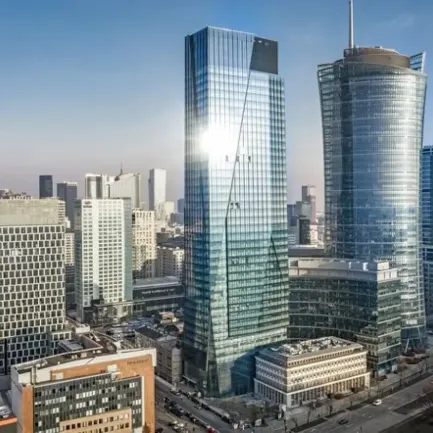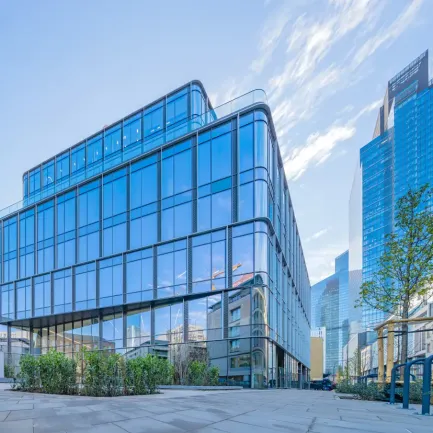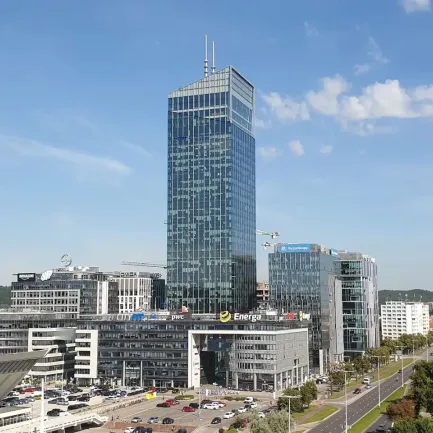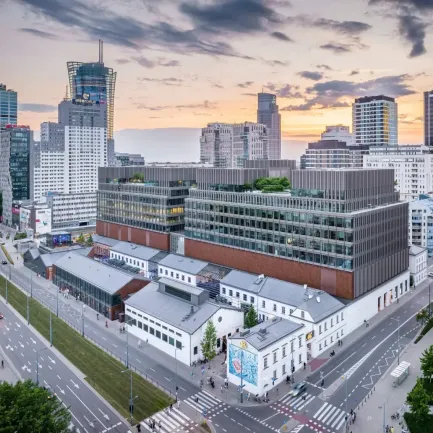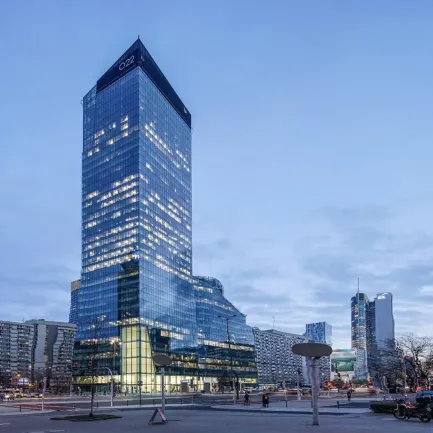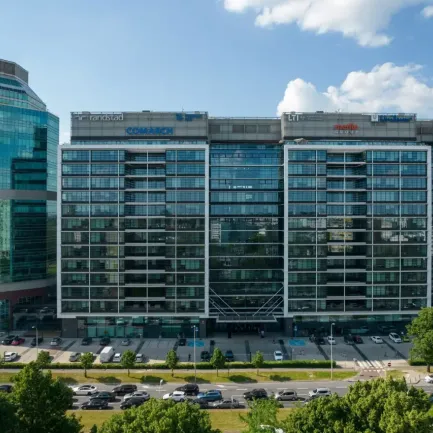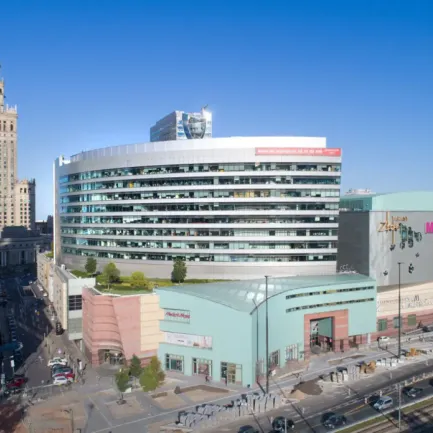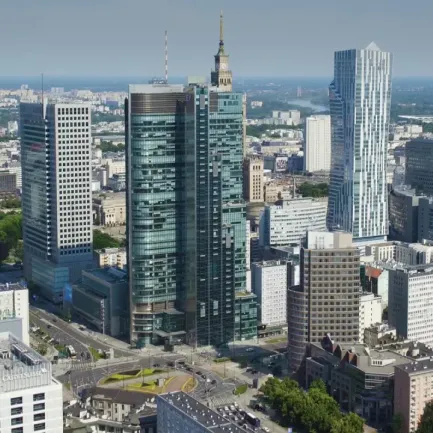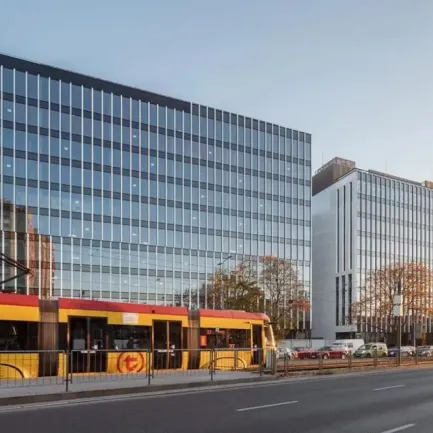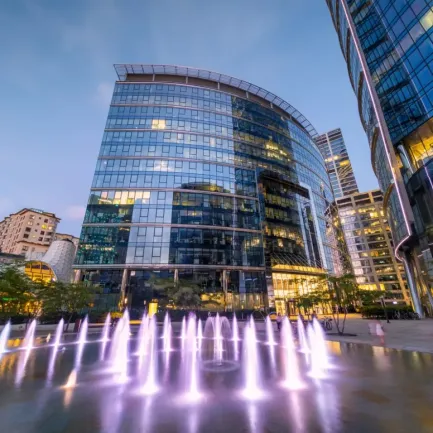Public institutions are increasingly planning to consolidate office space – driven not only by cost-cutting goals, but also by the need to boost efficiency and create modern, safe work environments, says Marcin Kowal, Associate Director, Office Department, Newmark Polska.
The consolidation of several locations into one or two modern offices significantly reduces the operating costs of government agencies. While relocation typically involves moving into a newer, better-equipped building with higher rent per square metre, these expenses are offset by lower overall space requirements. Public institutions also share facilities such as reception desks, conference rooms, utility rooms and service counters.
According to the Newmark Polska expert, office space consolidation is increasingly being seen as more than just a cost-saving tool. “It allows institutions to improve operational efficiency, internal communication, document flow, information sharing, and, ultimately, the quality of service delivery. Several dispersed locations that generate costs and hinder cooperation are being replaced by modern offices that bring various departments under one roof,” says Kowal.
Efficiency and prestige: the two pillars of consolidation
Consolidation processes are increasingly strategic rather than ad hoc. “Public institutions prioritise prime locations well served by public transport – for the benefit of both employees and citizens. Central locations increase employee comfort, facilitate access to services and strengthen the image of a public institution,” explains Kowal. “Alongside convenience and prestige, safety is gaining importance – from meeting OHS requirements to complying with air-raid shelter regulations that require public buildings to be prepared for emergencies. New government offices must also be fully accessible and aligned with ESG principles, which are becoming a standard in investment planning.”
Moving to a new office often goes hand in hand with introducing modern organisational and technological solutions. During the pandemic, many institutions adopted hybrid work models and digital workflows. “Most government offices still have cellular layouts, but now include more collaborative project spaces for teams of four to ten people. One of the key factors to consider when selecting a location is the availability of large server rooms for institutions that require premises meeting specific technical parameters,” says Marcin Kowal, Newmark Polska.
To lease or to buy? A tough choice for public offices
Public administration faces a key dilemma: is it better to buy or to lease a property. The choice largely depends on factors such as the planned period of use, an institution’s financial stability and security requirements. Many government agencies would prefer to own their buildings, but that’s not always easy – or even possible. Most public institutions lack in-house specialists capable of properly structuring and executing purchase transactions. High property acquisition costs are an equally significant challenge.
“Put simply, leasing is the most advantageous option in the short and medium term – for example, when an institution faces temporary or changing needs during reorganisation. It offers greater flexibility and requires lower upfront costs. Buying, on the other hand, makes more sense for long-term plans or when a building must accommodate specialised facilities such as archive rooms, server rooms or advanced security systems. It is also worth remembering that when office space is leased, the landlord is responsible for ongoing property maintenance and management, whereas ownership places this responsibility on the institution itself,” explains Kowal.
One such institution that has recently purchased an office building for its own use is the Marshal’s Office of the Łódź Province, which acquired Brama Miasta II, spanning more than 14,000 sqm and located at 66 Kilińskiego Street in Łódź. The move-in is scheduled for late 2026. Other notable transactions include an office building in Jana Kazimierza Street in Warsaw’s Wola district, bought by the Provincial Administrative Court, and another in Słowicza Street in Warsaw, purchased by the Institute of Environmental Protection.
Partnership is an option
Many public institutions own attractive plots of land suitable for modern office developments. The problem, however, is that they have no specialised teams needed to deliver such projects on their own. In these cases, cooperation structured as a Public-Private Partnership (PPP) can be a viable alternative. Under this model, a private investor constructs a building on publicly owned land according to an institution’s requirements, while the institution later uses the building and pays fees that help recover part of the development costs. Typically after 20–30 years, the PPP contract expires and ownership of the building transfers to the institution – sometimes following additional financial settlements.
While the PPP model is popular in Western countries, it is still only occasionally used in Poland. “PPP is an interesting solution as it effectively brings together the public and private sectors. The main barriers include complex procedures, lengthy negotiations and a lack of experience among government agencies. However, the construction of the District Court in Nowy Sącz shows that PPP projects are possible – the building has been completed under this model and will be managed by a private company for 20 years before ownership is transferred to the Court,” says Marcin Kowal.
Another model is the sale & leaseback, although it is very uncommon in Poland. It involves a public institution selling a building and then signing a long-term lease for the same property. “This solution is typically used in exceptional circumstances, when capital is needed immediately and the property holds no strategic value. It allows the institution to quickly raise funds and transfer responsibility for property management, maintenance and refurbishment to a third party,” explains the expert.
Many advantages, but also challenges
Office consolidation projects carried out by public institutions require close coordination and careful planning. Relocating multiple departments to a single facility calls for ensuring operational continuity and data security. “The biggest challenge lies in the logistics of the entire project: the relocation, IT system integration, standardization of work practices and oversight of fit-out tenders. Everything must be done without disrupting the day-to-day operation of the office,” says Marcin Kowal. “Another major challenge for public institutions is meeting ESG requirements. From 2027 onwards, all government agencies will be required to report the energy performance classes of their buildings, which will, in turn, necessitate upgrading older facilities or relocating to more energy-efficient premises.”
An interesting example of consolidation is the planned relocation of two branches of Bank Gospodarstwa Krajowego into a single location. The historic building in Warsaw’s Jerozolimskie Avenues, to which the Bank plans to return in the first half of 2028, is currently undergoing refurbishment.
A model for the 21st century
Despite its challenges, office consolidation among government agencies is a trend that is delivering tangible, long-term benefits. Experts agree that the public sector is adapting the demands of the 21st century not only through digitalisation but also through informed property management. “A modern office may generate higher costs per square metre, but overall it helps reduce the total office footprint and eliminate duplicated expenses. It also benefits the image of a public institution, making it appear modern, open and efficient. This reflects a strategic approach to properties that will support the development of public administration for decades to come,” concludes the expert from Newmark Polska.



